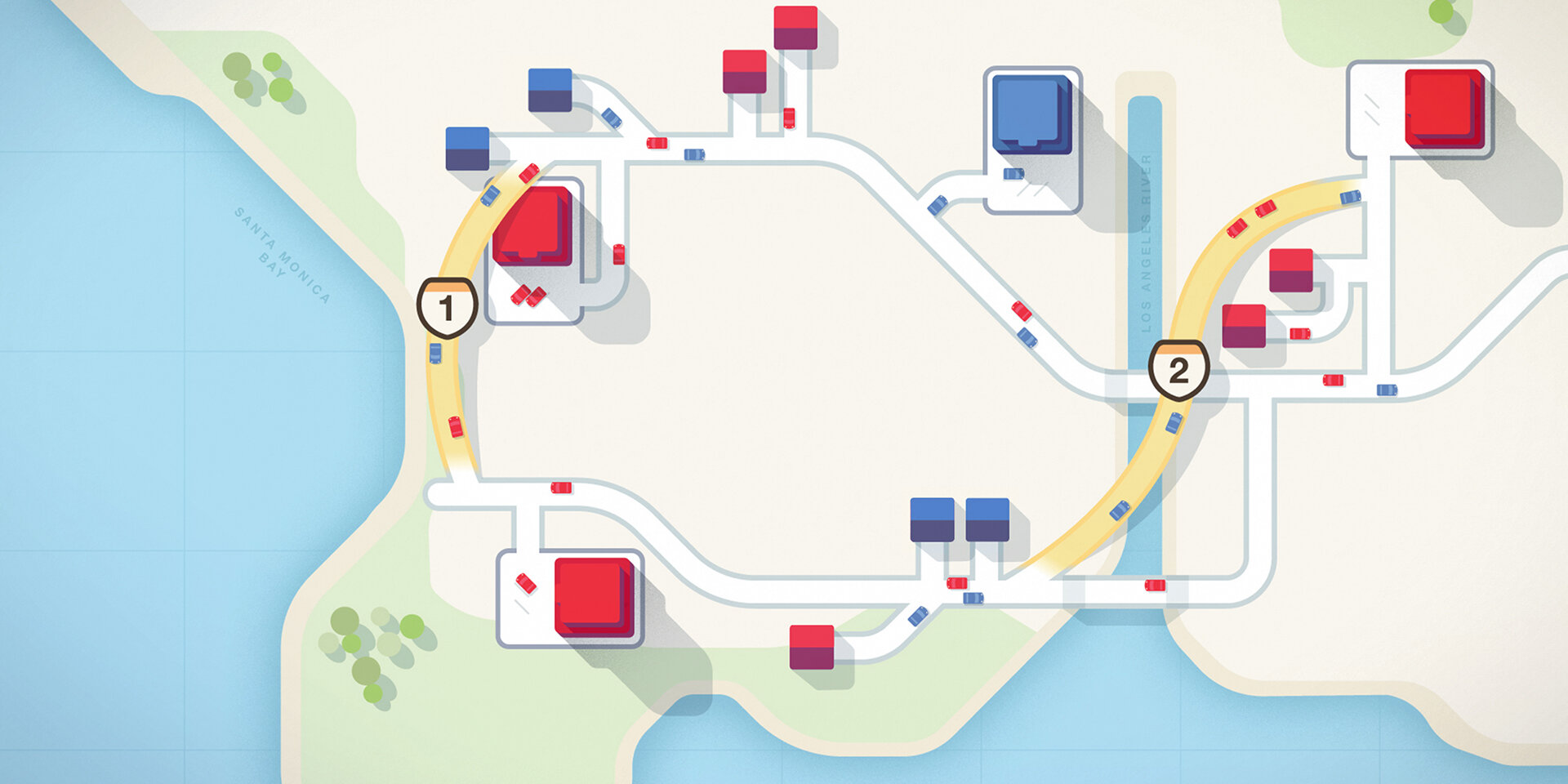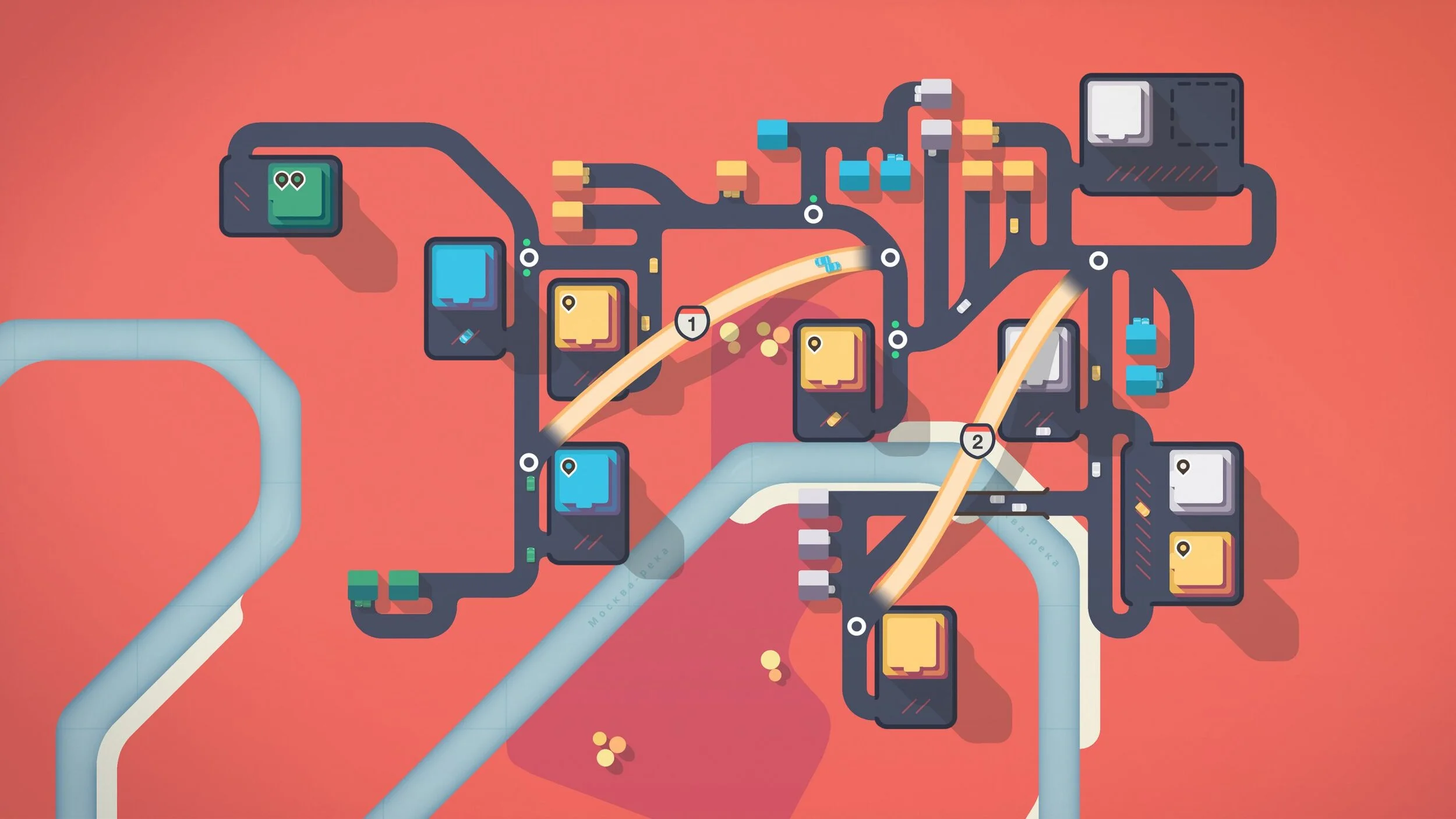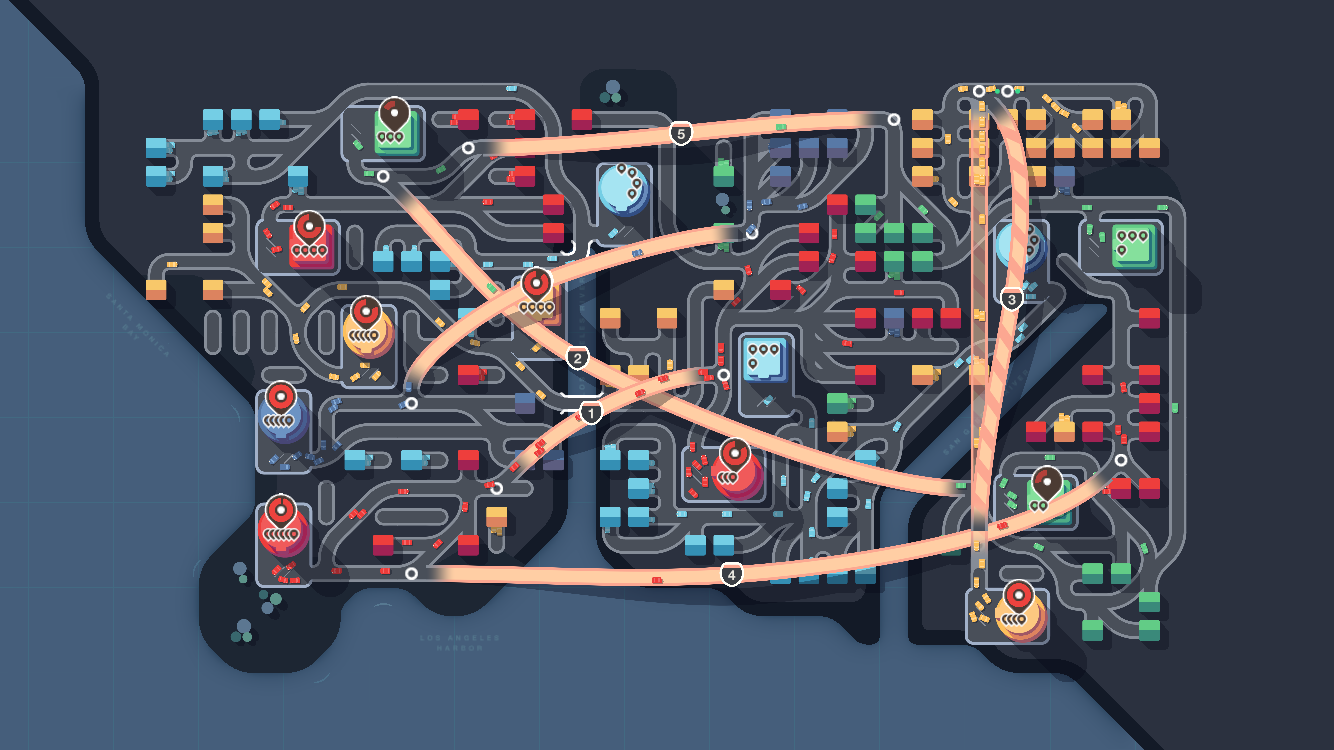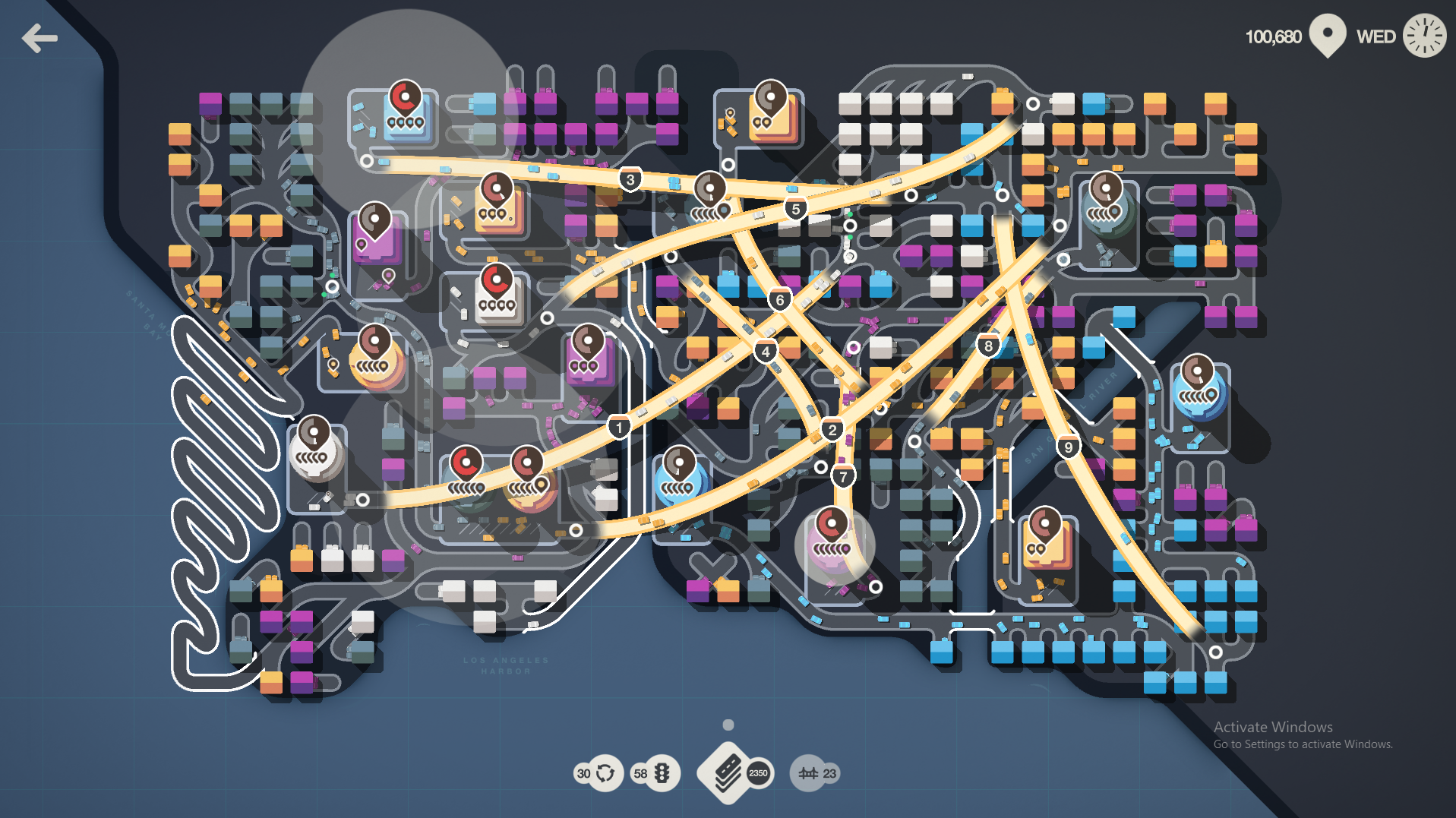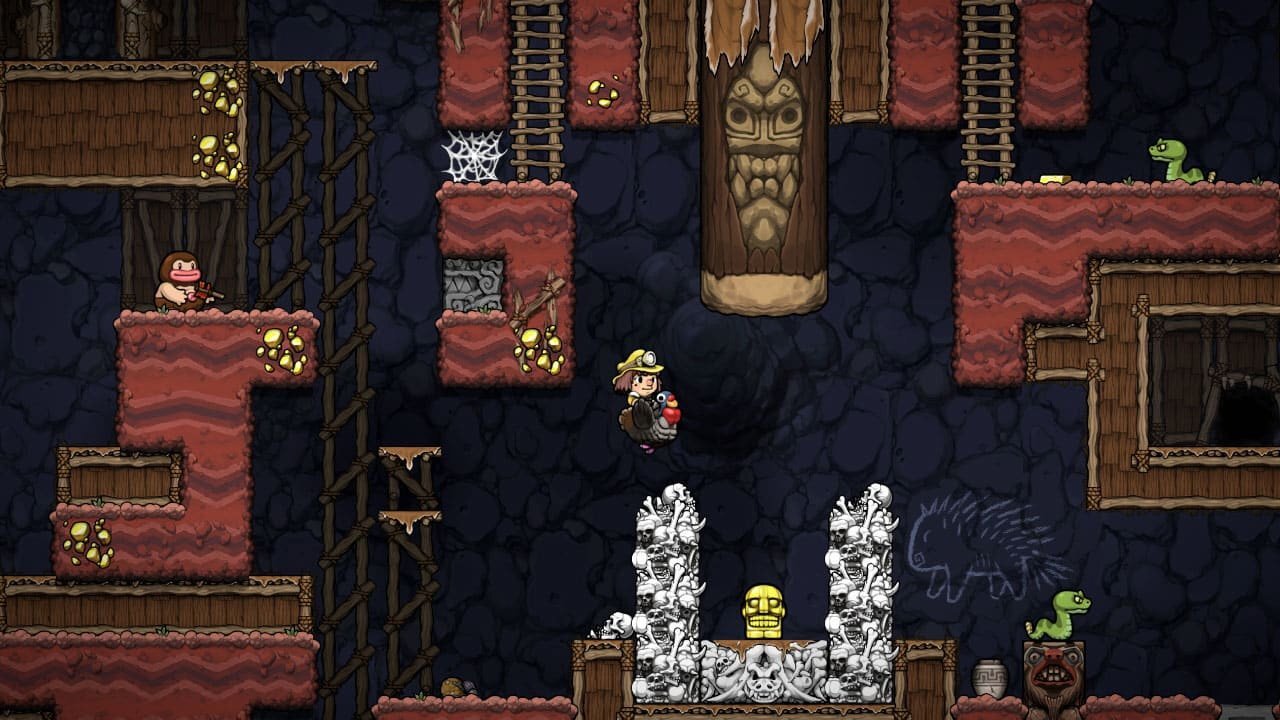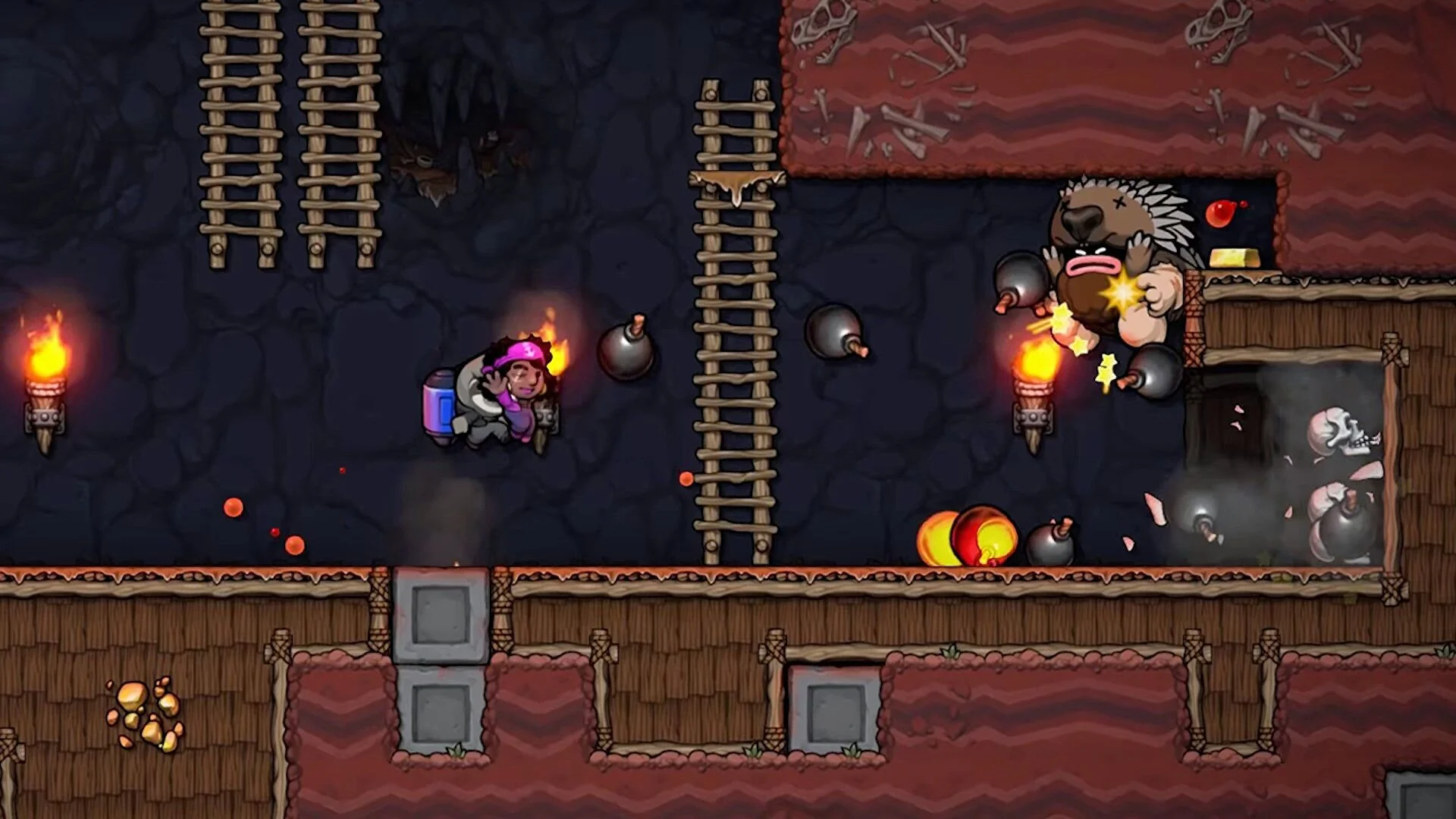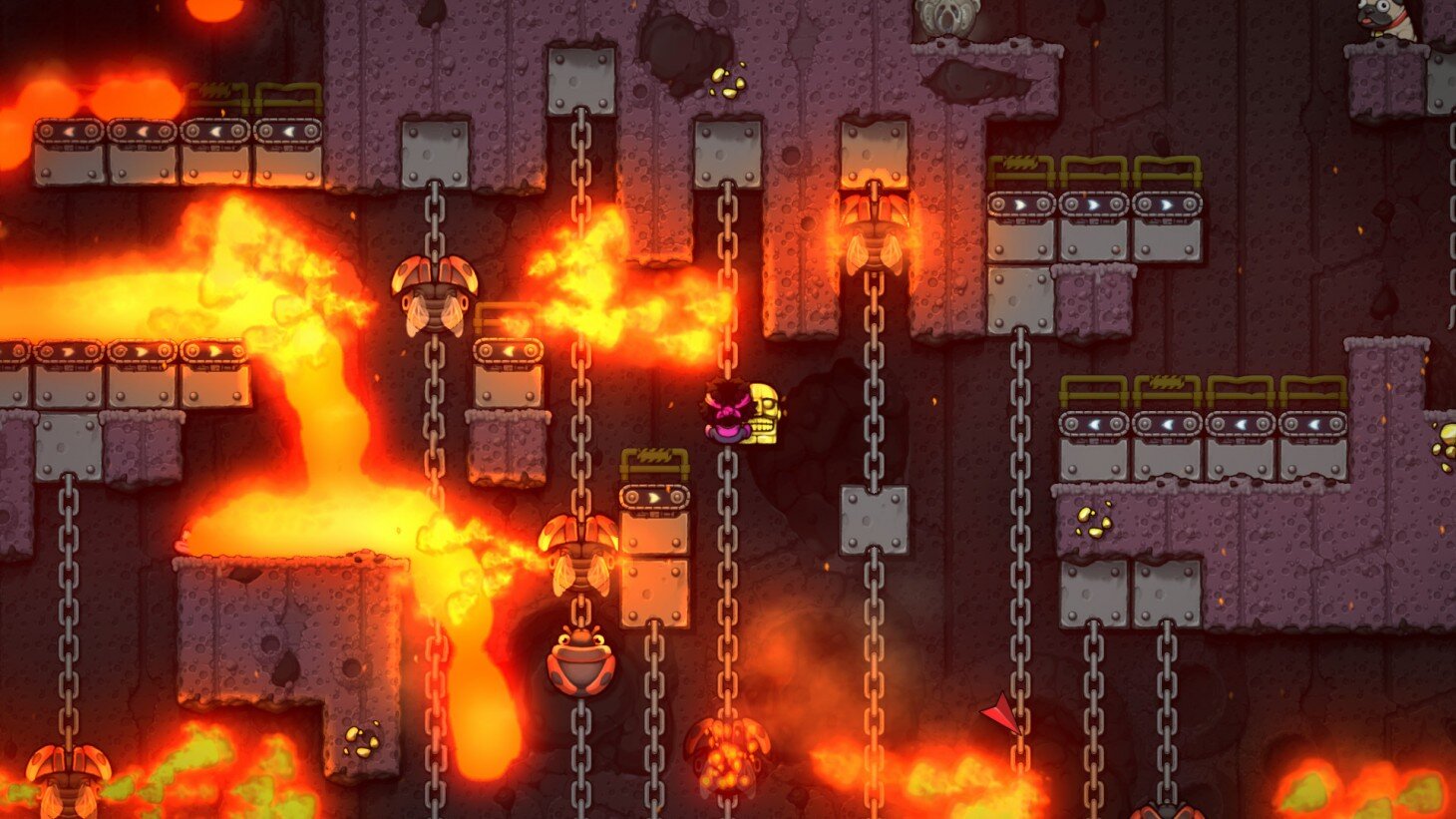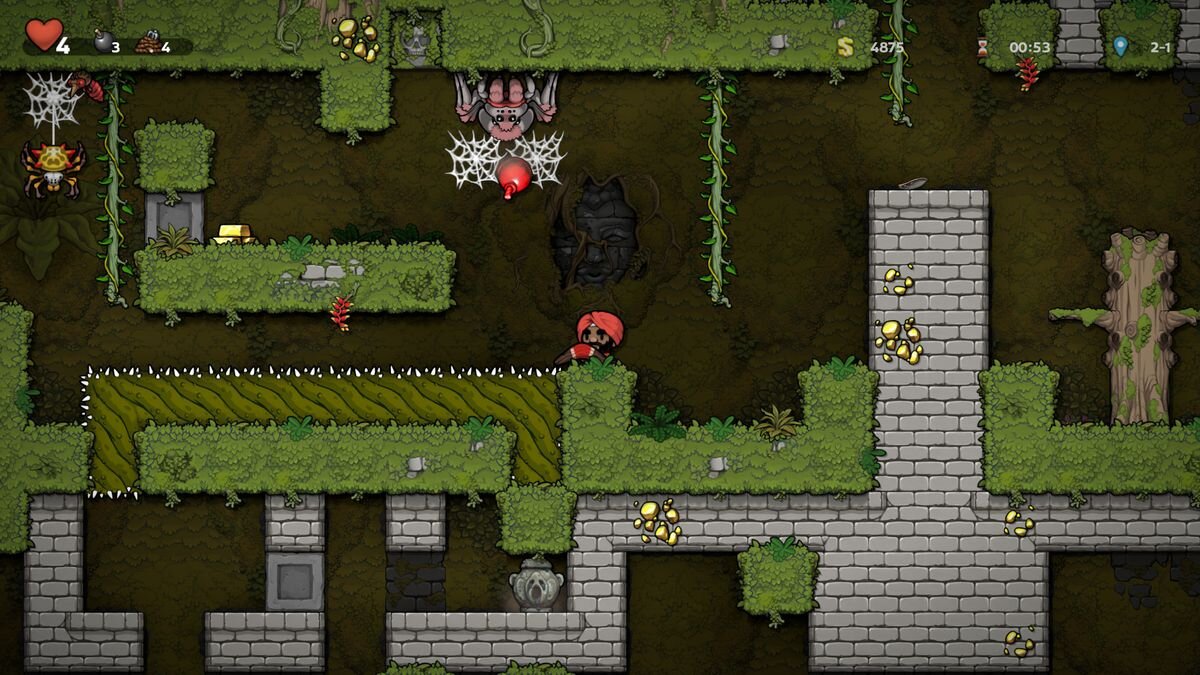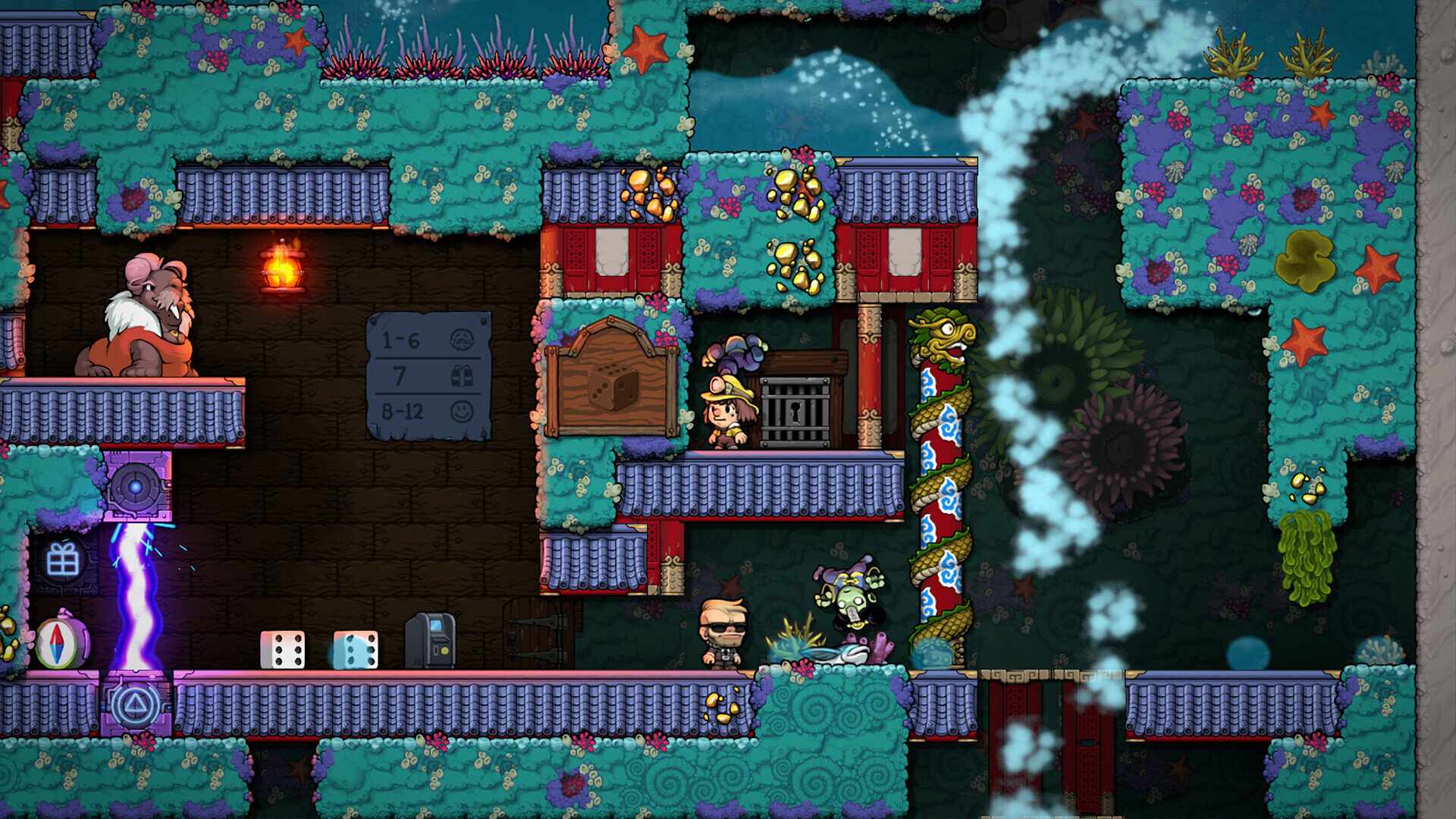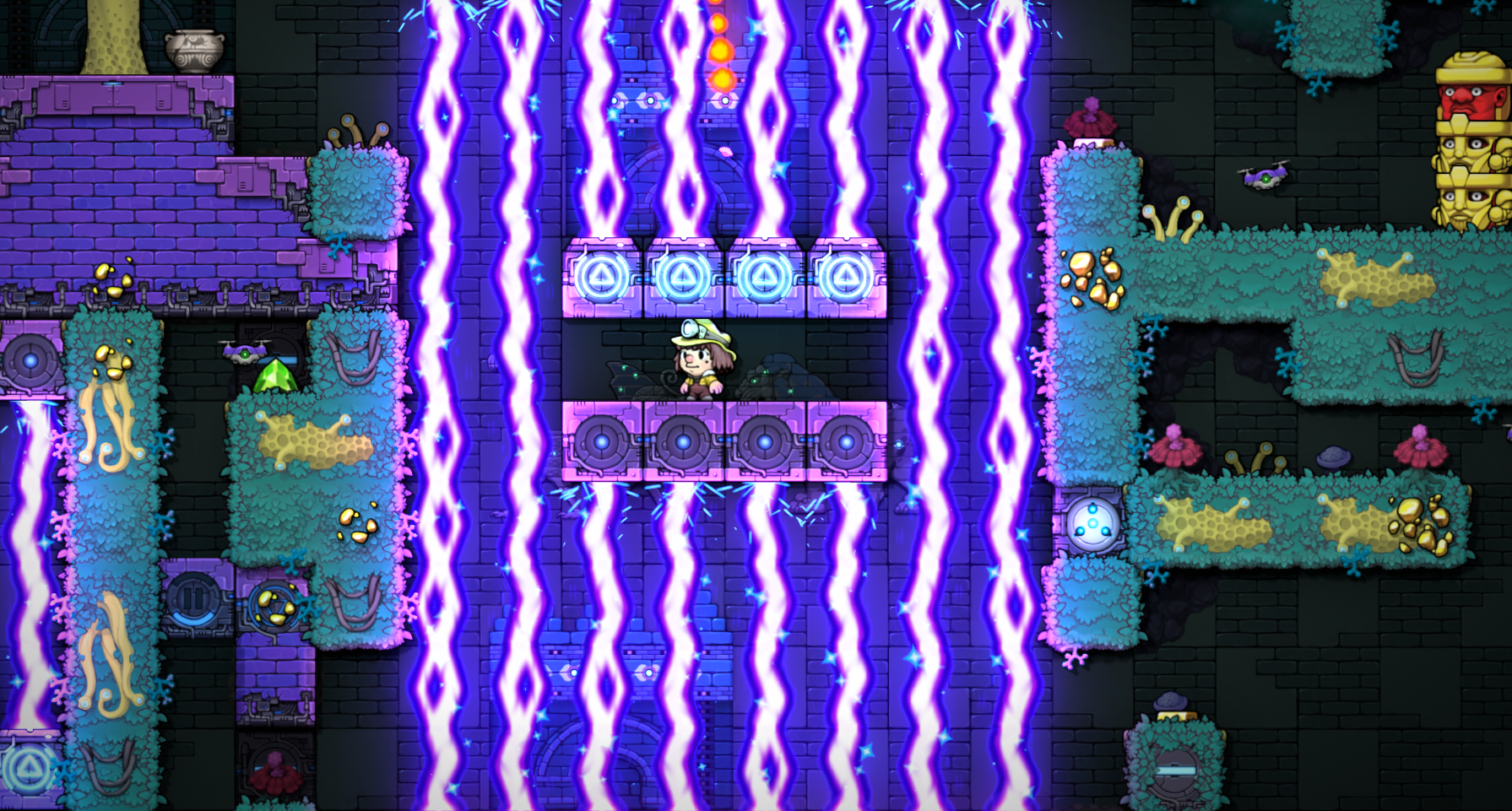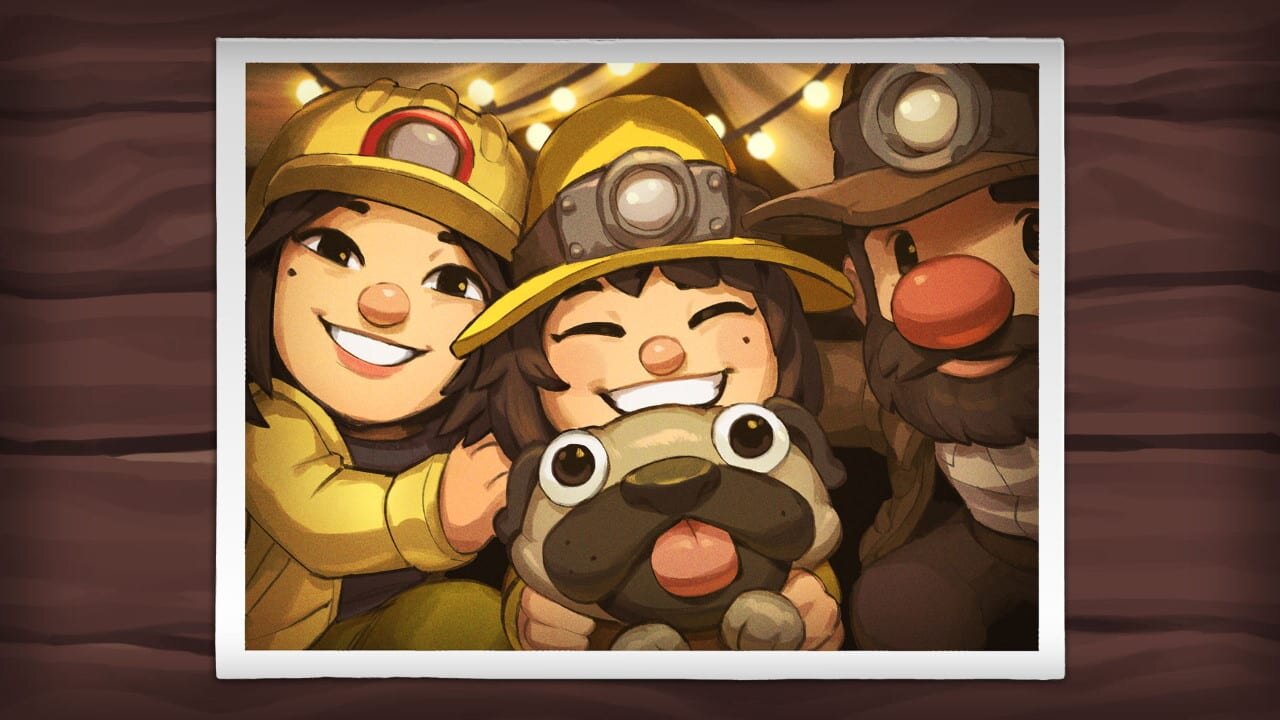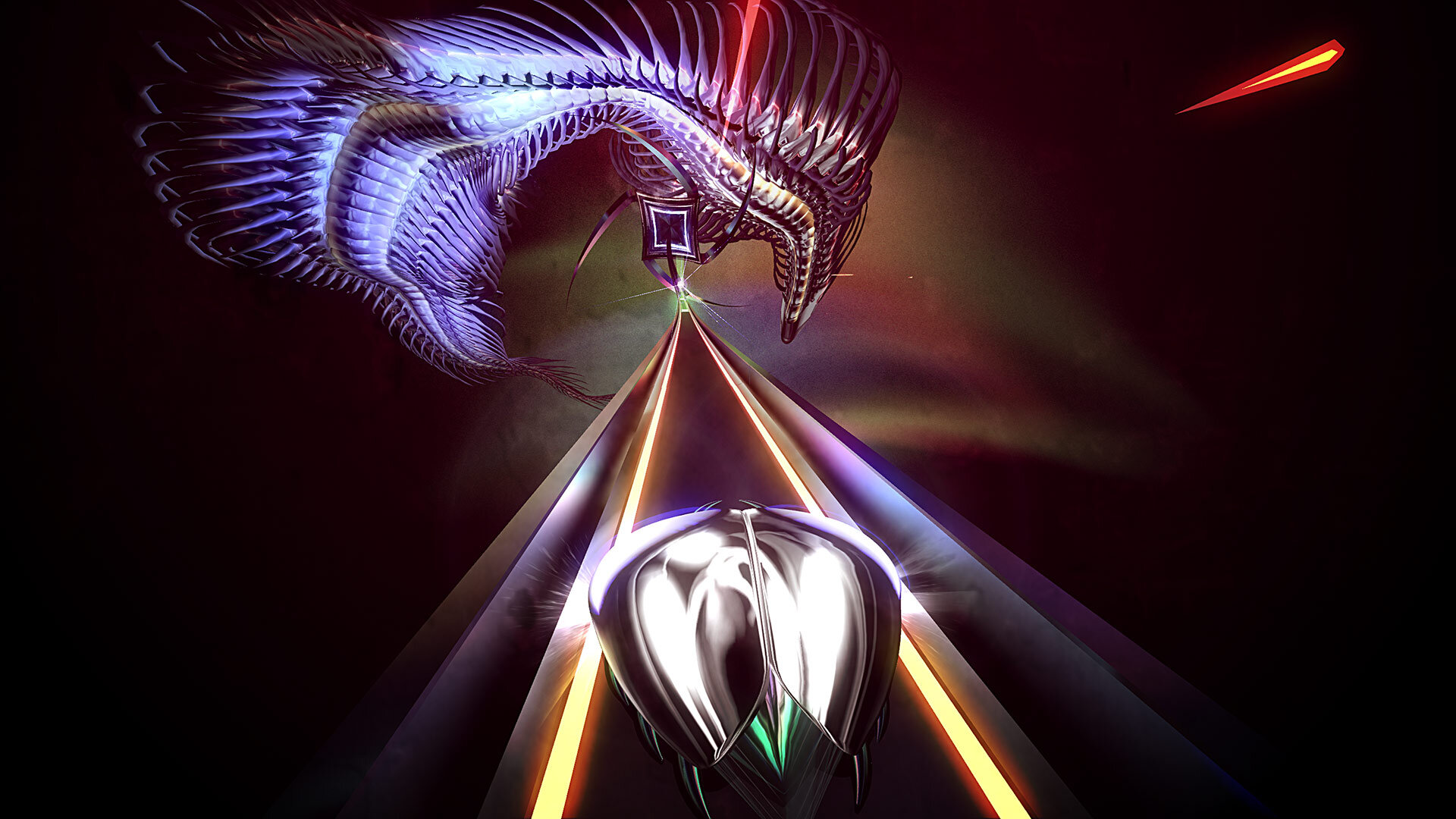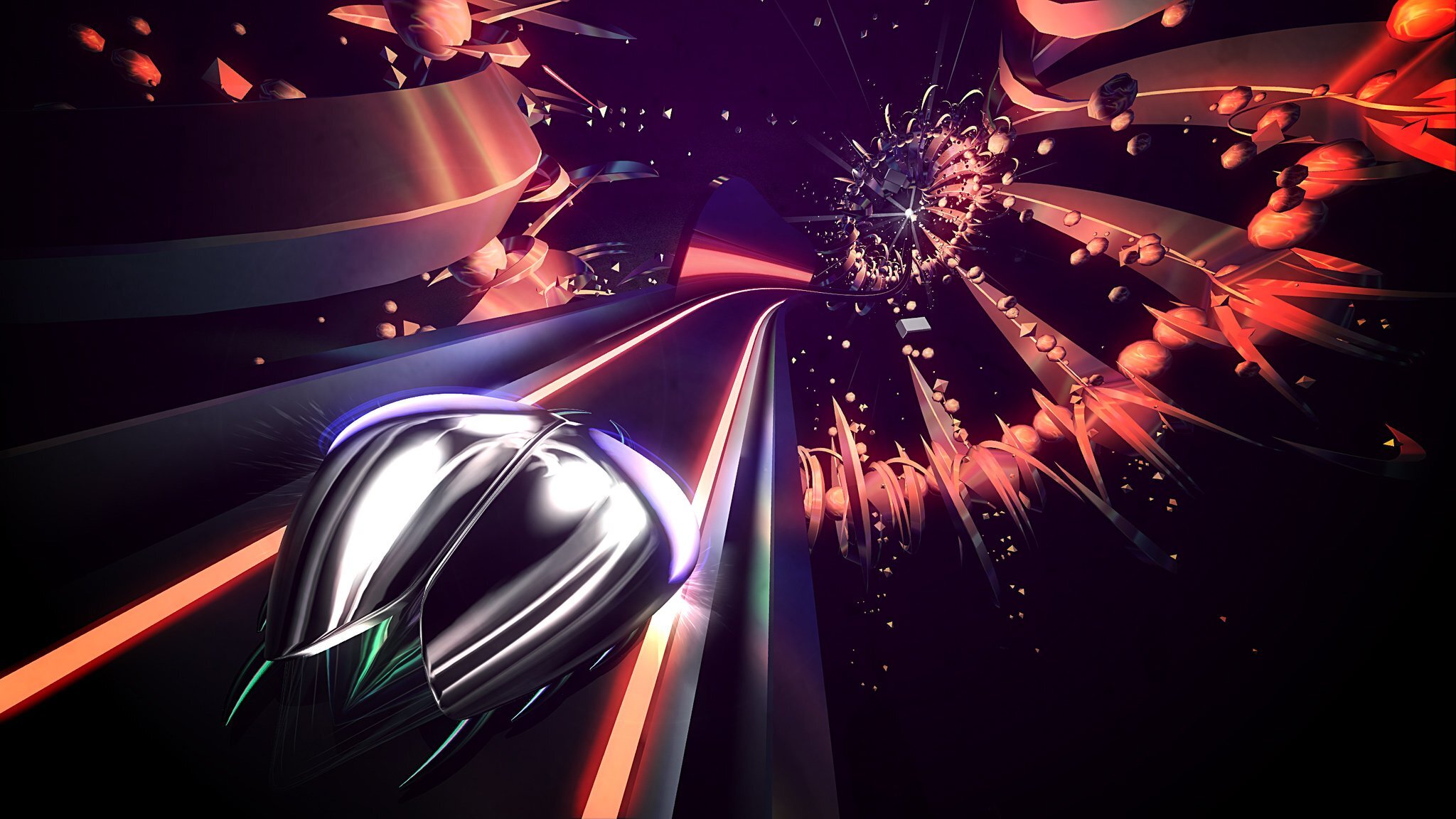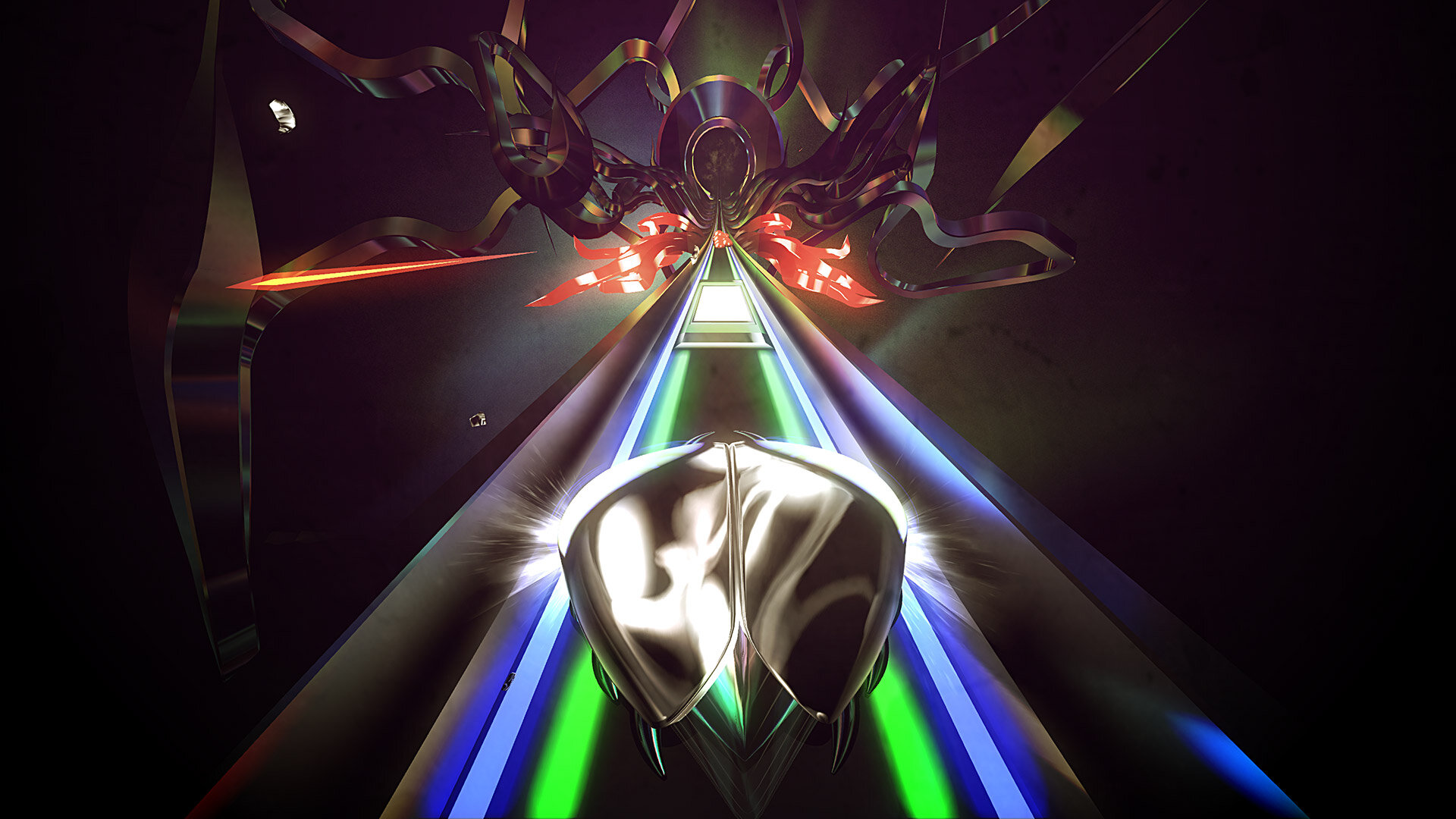Three Games That Have Kept Me Sane In Lockdown
Written By Josh Hill
If there is anything that this lockdown has done for students, it’s given them much more freedom in how they spend their time. After all, when the teachers aren’t actually able to stop students from doing whatever it is they want. To an extent, it’s understandable. After all, the lockdowns have taken their toll on many of us both mentally and physically so it would only make sense for people to turn to things such as video games… you know, to cope. Or maybe I’m overanalyzing and it’s just because us zoomers won’t get off our damn phones/computers, can’t be certain (it’s probably that).
And with that said, here’s my pick for three video game recommendations that have kept me from losing my sanity in these trying times.
(Also, mild spoilers for Spelunky 2, and slightly less mild spoilers for Thumper)
Last-minute clarification:
I recommend that you play all of the games listed below, the reviews give some of my thoughts on the way the games are played, and all the numbers at the bottom of the reviews represent is the amount that I enjoyed playing the games.
Mini Motorways (2019): Casual, Strategy, Simulation
Apple Arcade, macOS, Windows, Nintendo Switch
Mini Motorways is a casual simulation indie game developed by Dinosaur Polo Club and is the award-winning sequel to their award-winning 2014 game, Mini Metro.
Both games focus on building a transportation network that must grow as the population and size of your chosen city begin to expand.
The mechanics are simple and easy to understand as the intuitive colour coding makes understanding the goal very simple, make sure that
enough cars can reach their destination of the same colour and return to their home back in time for dinner. If any of the buildings don’t receive enough visitors in time, the game ends. As the intensity of the gameplay ramps up, the pre-existing buildings can expand in size which increases the number of vehicles required to stay active. This is a small feature that will often require you to redesign entire sections of your road to fix any inefficiencies.
To keep things fresh, there are a variety of different road-building tools you can use. At the start of each week, you are given two options to choose between of different items you want to attain. Most of the time, both choices will give you 10-40 roads as well as a selection of traffic lights, roundabouts, highways. bridges or tunnels. This small number of additional tools can help make the road building much more enjoyable, while it also serves a second purpose. By forcing the player to make a choice between two sets of finite resources at the start of every week, the game makes it so that the player must consider what types of resources they may need in the future, a feature which can often lead to needless frustration, as the player has no way of knowing in which direction their city will expand. This randomness can provide an interesting and fun challenge but tends to make the weekly choice of items seem redundant and deceptive.
Another noteworthy feature is the variety of levels you can play on. Each level is a new city that you can unlock after reaching a certain milestone on the previous level. The levels themselves lack distinctions from each other in terms of the gameplay, as beyond the introduction of mountains, the layout is the only thing that differs from level to level. Normally this would be fine but given the fact that you have to reach a certain point in the previous level to ‘unlock’ the new ones, you would expect there to be something that would differentiate it from the previous levels, but no. The difficulty doesn’t even ramp up that much despite the descriptions on the cities themselves hinting at things such as ‘rapidly growing population.’
Despite this glaring design flaw, the different levels provide a refreshing change of scenery, especially when playing for long periods of time. An amazing feature that does help separate the levels is the colour palate. While you would expect different levels to have different colour schemes, Mini Motorways takes it a step further by providing multiple different colour scheme choices for each level, including a night mode which features primarily blacks, greys and various shades of the level main colour.
Finally, I’d like to talk about stress. Mini Motorways can become very difficult in the later stages of a game and the amount of stress that you would expect to feel from this constantly increasing pressure is, surprisingly non-existent. The game combats player distress with a number of different things,
the first of which is sound. The developers made a design choice to utilise calming music for the soundtrack. The combination of the peaceful music and the rhythmic clicking of the clock keeps the player in a zen-like state which, for me at least, was able to keep me engaged enough to completely forget about the various stresses in both my life and in my rapidly failing network of highways. The stress only kicks in once you hear the sound that indicates that one of your buildings isn’t getting enough visitors and you scramble to try and figure out the most efficient way of moving an entire overpass in the hopes of getting just a few extra cars to go halfway across the map in time. And even after that, once you’ve failed and you’re feeling annoyed about it, all you can do is sit there and contemplate what just happened.
The second design choice used to combat stress is the clock. In the top right-hand corner of the games HUD, there’s a clock that allows you to either increase the speed or completely halt the passage of time in-game. This is a very simple mechanic but it allows players to assess any situation that they’re in at any speed they want. The player can pause if they’re feeling overwhelmed and they can still (to a certain extent) manipulate the game world in any way they see fit. That said, moving or removing any roads on the board doesn’t take effect until you unpause the game and all the cars are off that strip of road, so it isn’t completely overpowered.
Overall, Mini Motorways is an incredibly relaxing, arcade experience that you can use to relieve stress and get immersed in a peaceful world of traffic noises and roadbuilding. Although the game has a number of mechanics which aren’t fleshed out enough to receive the kinds of high praise that the game has received, the atmosphere and replayability make up for that.
I would give Mini Motorways a 7/10
Get it now for $14.50 on macOS, Windows or Nintendo Switch
Or play it now on Apple Arcade for $4.99/month
Spelunky 2 (2020): Roguelike, Dungeon Crawler, Platformer
Windows, Nintendo Switch, Playstation4
Spelunky 2, released in 2020 by Mossmouth and Blitworks, is the sequel to Spelunky(2008). The game was received very well by both critics and longtime fans of the original game alike. That said, I probably wouldn’t be discussing it if it weren’t.
The gameplay is difficult and challenging but leaves room for a learning curve that is, despite being steep, is relatively consistent, which aids in the accessibility of the game to those who are newer to the series or just the entire genre.
Upon booting up the game, you are treated to an animation of your character arriving on the moon, walking towards a cave entrance. After this, the game shows you an opening narration from the character’s perspective which is constructed of 3 randomly chosen sentence fragments. And that’s all that’s shown before the title drop, and what a well-deserved title drop it is. In under a minute (and without the player touching the controls even once), the game establishes a setting, gives you a character, and provides a general idea of what the game is going to be about.
The tutorial quickly gets you acquainted with the basics of gameplay without much hassle, but the first level doesn’t pull and punches and makes it clear very quickly that you’re on your own. In this unfamiliar environment where it’s so very easy to die, all the nuances of the movement system and the different mechanics, enemies and ways different items can interact, are all things that you will have to learn on your own. This game is difficult, but if you expected otherwise then you’re in for a wild ride. When it comes to games like Spelunky 2, you can’t really fault them for not holding the player’s hand under any circumstances, but I would have liked to see a feature that slightly modifies level generation and/or nerfs enemies. While I do realise that games are allowed to be designed and advertised to be hard, it’s unfortunate when there are those who struggle to enjoy a game due to the fact that they may not have as much experience in a game. While I do realise that I’m no technically a game journalist and expect my ability to pay games to decrease significantly, I only say this because skill shouldn’t be a factor that inhibits people from enjoying a game, even if experience something you need to unlock certain more important parts of the game. Most people who value their lives outside of their mothers’ basement will likely never see all the content in this game, and that’s because of how hard and complex it is to obtain the true ending.
Moving onto the actual gameplay. Spelunky 2 plays like most roguelikes in the sense that you start a run with the same items each playthrough and you have one life to clear through as much of a randomly generated dungeon as possible. In the case of Spelunky 2, you start each run with 4 ropes 4 bombs, but you can collect more items throughout your run via various drops, stores and NPCs who will give you items for completing various tasks. These items range from weapons to consumables, boots, and more ropes and bombs. I could sit here and detail all of the most basic facets of the gameplay and we’d be here for a while. The point is, Spelunky 2 has a virtual never-ending stream of content and mechanics that keep those of the player base determined to keep playing engaged, and the high skill ceiling allows players to experience an environment with almost never-ending growth of skill. I’m honestly going to cut the review short here because you won’t hear me say anything negative about this game beyond what I’ve already noted. There is a reason that Spelunky and Spelunky 2 are considered some of the best roguelikes ever made.
If you’re a fan of platformers and you’re up for the challenge, I would whole heartedly recommend this game.
I would give Spelunky 2 a 10/10
Get it now for $28.95 on Windows, Nintendo Switch or Playstation4
Thumper (2016): Rhythm Violence, Horror
Windows, Android, iOS, Nintendo Switch, Xbox One, Playstation4, VR
And I am just gonna put a warning here because even though it isn’t officially a horror game, it does have some unsettling imagery, So don’t get annoyed at me.
Thumper(2016, developed by Drool) is a horror game in the same way that selling meth is illegal.
Out of fear that it won’t hold up under criticism, I won’t be elaborating on that metaphor any further, but the point is that despite what its steam page may try to convince you of, this game can be deeply unsettling and contains some genuine nightmare fuel. The actual horror elements are much lighter than most legitimate horror games, but as noted by the reviewer from IGN, this game has a habit of filling players with
“existential dread.” And did I mention it’s a rhythm game?
Thumper is a 5 button rhythm game. I say that because (assuming that you’re on the keyboard) all you need to play is your arrow keys and spacebar. However, the devs were determined to milk these 5 buttons for all that they’re worth, so as your player character (a random space beetle or something) screams down Thumper’s roller coaster-like tracks, you’ll likely be surprised by the number of movements that you can make with the limited controls you have. The first two levels begin with a tutorial that drip feeds you all the different movement mechanics at a well-done pace which allows you to practice before flinging you into a series of chaotic levels that on your first playthrough, are likely to test your capabilities more than you’d expect.
The music in thumper is spectacular and the bassy, pounding soundtrack matches perfectly with the gameplay which was aptly categorised by the developers as “Rhythm Violence.” In Thumper, when you miss a turn you slam straight into it and your bug loses its protective exoskeleton as the screen flashes red and displays a disorientating visual effect that for all intents and purposes, requires you to play solely with your ears for a second or two. But even when you do perform a perfect turn, it’s not much better. It’s not that you’re turning, it’s more that you’re intentionally slamming straight into the wall then ricocheting in the direction you need to go. When you hit a wall without your exoskeleton, your body shatters into pieces that just continue to move forward with the camera at the same speed as if nothing ever happened… it’s nuts. The game is pure chaos, and the strange, dark, music reflects this perfectly. The time signatures alone are bonkers, with levels like level 7 which has music with a time signature of 7/8. Figuring out the tempo is difficult but essential if you want to progress because, in the midst of everything, the music is the only help you’re going to get.
Thumper’s design is also completely insane. A theme of cosmic horror filled with jagged and spiralling tendrils, claustrophobic tunnels of madness and… the bosses. The boss design in this game is creepy and they get larger and more frightening until the climax of the game which features the final boss, and the final final boss. The final boss is a giant wormhole like being that words fail to describe. When you beat it, the boss doesn’t disappear, it just stays there and the track keeps going until you enter its gaping mouth and travel through a world of sharp teeth and spikes. Then after that… well, I’d prefer to leave that to you to find out if you wish to play the game.
All of this imagery is easy enough to cope with when playing the game normally, but this game has VR compatibility, and quite frankly, I am fortunate enough to have never had the displeasure of trying this.
In summary, Thumper is an interesting game… I would recommend this game if you don’t struggle with fears of cosmic horror because the gameplay is very enjoyable. If you do play, my recommendation would be that you play through the game. And then once you’ve done that, you go back and play through it again and see just how easy the earlier levels are once you’ve played through the later levels.
I would give Thumper a 6/10
Get it now for $29.95 on Windows, Android, iOS, Nintendo Switch, Xbox One or Playstation4
-
If you have any inquiries, comments or feedback, let us know by commenting down below, emailing us directly through our ‘Contact Us page, or messaging us through:
Instagram: @ubiqueuhs
Gmail: ubiqueteam@gmail.com

